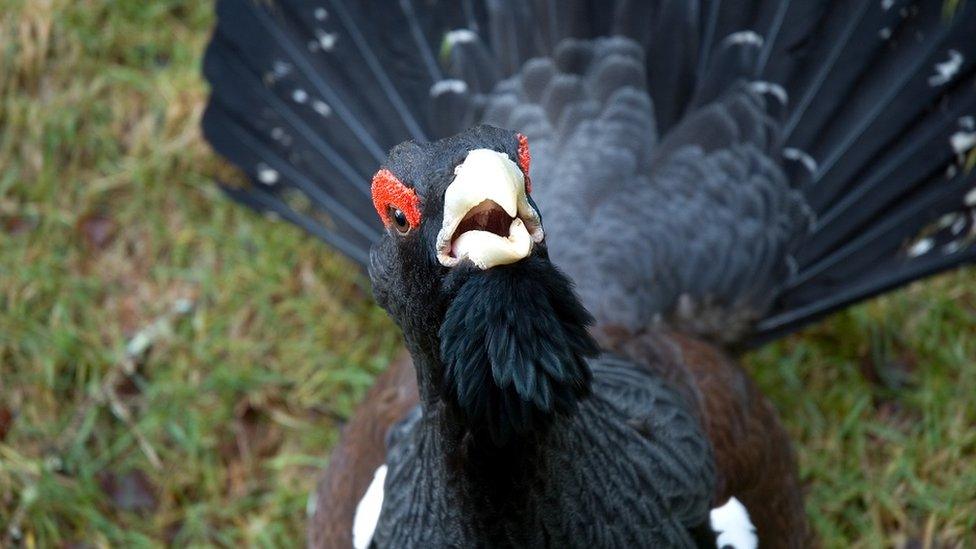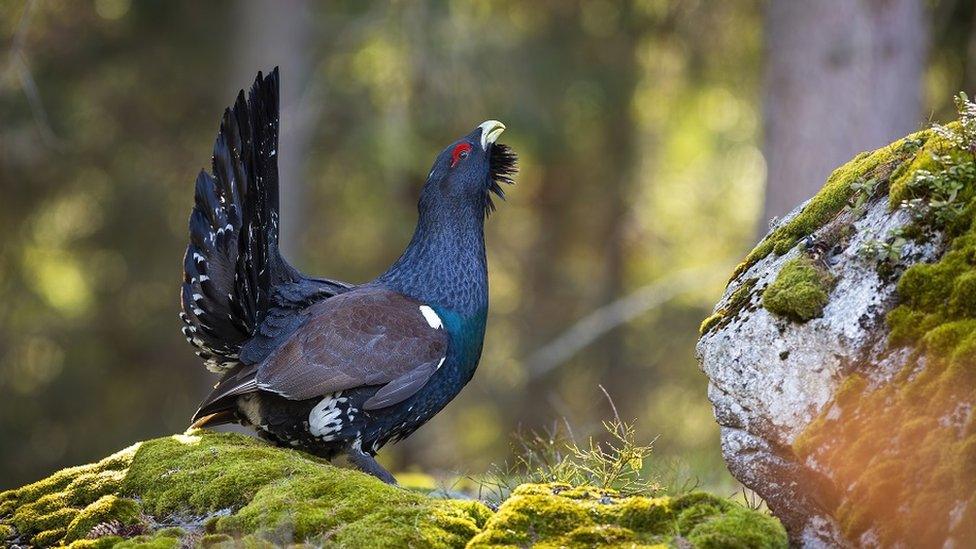Grazing cattle boost capercaillie habitat
- Published

Capercaillie are the world's largest species of grouse
The survival of one of Scotland's rarest birds has been given a boost by the introduction of cattle to a Highlands forest.
Over the last 50 years, capercaillie numbers have fallen by more than 90%.
The majority of the remaining birds are found in the Cairngorms National Park, with RSPB Scotland's Abernethy Forest among its strongholds.
The cattle's grazing and wanderings through the forest helps to create a capercaillie-friendly habitat.
Reserve warden Michael Butler said the livestock trampled down heather and other vegetation that overshadowed blaeberry.
Capercaillie chicks feed on insects attracted to blaeberries.
The capercaillie is a native species that became extinct in Britain in the mid-18th Century. The main cause for the extinction was thought to have been a catastrophic loss of its woodland habitat.
Birds from Sweden were reintroduced into Perthshire in 1837, followed by later reintroductions to Scottish pinewoods.
But a range of issues including human disturbance, habitat loss, predation and climate change reduced numbers of the bird, which is the world's largest species of grouse.
The Cairngorms National Park includes parts of the Highlands, Aberdeenshire, Moray, Perthshire and Angus.
Cattle have been used at other Scottish locations to improve natural habitats.
Numbers of a rare butterfly have increased at Mabie Forest, near Dumfries, after Belted Galloway cattle were brought in.
The cattle keep grass from getting too long and create the sort of wet habitat and muddy hollows the pearl-bordered fritillary flourish in.
- Published24 June 2021
